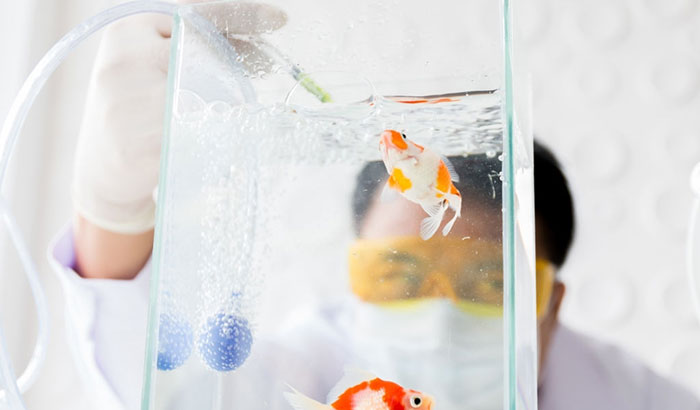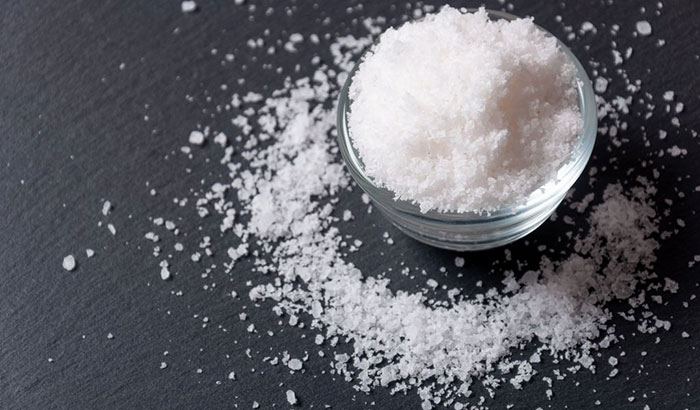If you own a saltwater aquarium or a reef tank, you must know how to make saltwater for aquariums. There are different ways to do it, but our method is practical and straightforward and proven to be effective in simplifying making saltwater for your fish tank. Here’s the step-by-step process below:
Step 1: Estimating the Right Amount of Water to do the Job
It is essential to know how much water you need to make will determine every step in the process for a number of reasons. One reason depends on the size of your aquarium. If your nano reef needs a few gallons for a water change, you can use a five-gallon bucket to make the saltwater.
However, if you own a bigger aquarium, have a number of fish tanks, or maybe fill the fish tank for the first time, perhaps you will need a much larger container for mixing your salt and water.
The important point to remember is to use the right size of mixing container so that you will only need to do one mix to satisfy your saltwater needs for all the tanks you own. It is also good to mix more than what you need just in case. It is better to have too much water than not enough.
If you have excess saltwater, you can easily store that extra water for future usage. There are many containers to choose from, such as empty soft buckets to 55-gallon plastic trash cans. Using an old aquarium is also doable but make sure that whatever container you use will not spread chemicals, leak-free, and hold the water securely.
Step 2: Only Use RO/DI Water (Reverse Osmosis)
An RO/DI water is the abbreviation of Reverse Osmosis Deionized water. This reverse osmosis water undergoes a process in which the water is forced through a membrane filter cartridge which rejects most of the small articles and only allows 100% of pure water to go through.
Meanwhile, the marine salt mixes usually are closely matched to natural seawater. If you try to examine closely, the water contains nothing but pure H2O, while distilled water and pharmaceutical water which is frequently used in lab studies are neither practical nor practical to be used in an aquarium.
Instead, every aquarium should have an RO/DI system that will be used to filter water which is the best option in mixing saltwater at home. Using this tap water in your aquarium is not ideal because it may contain heavy metals, phosphates, nitrates, and other substances that are prohibited in the aquarium.
Using a high-quality RO/DI system in your home will remove all the harmful substances and ensure that your saltwater will not be the cause of triggering algae bloom or degrade the water quality of the fish tank.
In addition, you need RO/DI water to tap off as well. This situation is why it is essential to have an RO/DI system in your own home.
Step 3: Adding the Salt Mix to the Water Correctly
The initial thing to do in this step is to fill your water container with RO/DI water. After that, you will need to follow the direction on the salt package to estimate how much dry salt mix you will need.
You need to find an instruction that indicates the volume required instead of the weight of the salt. It is unlikely that you will measure the weight of the salt on the weighing scale. Measure just enough salt mix you need to the corresponding amount of water in your container.
Please note that it is always easy to add any amount of salt if you need it. Doing this action will ensure that the parameter is exactly as intended. Adding the salt mix too fast can cause precipitation to alter the chemical makeup of the saltwater.
Each brand of the salt mix comes with a different type of instruction when it comes to the amount needed in a particular amount of water. It is also not advised to mix different salt brands because it will not result in properly balanced seawater that is safe for your fish tank.
If you are using a soft bucket or a 55-gallon drum, it is an excellent idea to use a circulation pump to agitate the water. The moving water will help dissolve the small particles more quickly. Using a small powerhead or building a DIY hard pipe mixing system for larger containers.
Gradually pour the salt into your RO/DI water container instead of quickly putting the salt at once. If you see a pile of undissolved salt is super concentrated and can precipitate inside calcium and magnesium carbonates which will then alter the chemistry of the final saltwater mixture.
Step 4: Measure the Salinity, pH Level, and Temperature
Measuring the salinity of the water is now easy with the availability of the refractometer. This device measures the specific gravity and salinity in parts per thousand. Using a refractometer is quick and easy. All you have to do is add a few drops of salt water to the refractometer glass and read the levels through the eyepiece.
Handheld connectivity meters and hydrometers are also suitable options in measuring the salinity of the specific gravity. It is essential to wait until all the salts are dissolved before you start measuring the salinity, pH level, and temperature.
It is ideal for checking the pH level after all the salt is dissolved. If the pH is a little bit out of range, contain the mix of saltwater for 24 hours and then measure again. It will take 24 hours or more for the salt to be fully dissolved and for proper gas exchange to occur in the water mixture.
Using the heater inside the mixing container will bring the water up to a suitable temperature for you to prevent shocking your aquarium when performing a water change. Properly heated water also assists in dissolving the salt mix quickly. Please double-check the temperature before performing a water change using an accurate thermometer.
Step 5: Storing Salt Water
Fish tank owners store the extra saltwater mixture for future and emergency use. Yes, it can be done. You can store a 5 gallon or even a 100 gallon depending on your preference.
Always remember that saltwater will not go bad when it is stored in a container for a while. If you want to add the saltwater, just add a heater prior to using the salt water to bring the water up to a suitable temperature.
If you have a heavy demand for saltwater, it is better to set up a mixing station in your own home. This action will make it easy for you to make a saltwater mixture quickly.
Conclusion
Learning how to make saltwater for aquariums is essential if you own a reef tank or a saltwater aquarium. Depending on your needs, it will be better to have your own mixing station if you frequently need saltwater for your aquarium.


